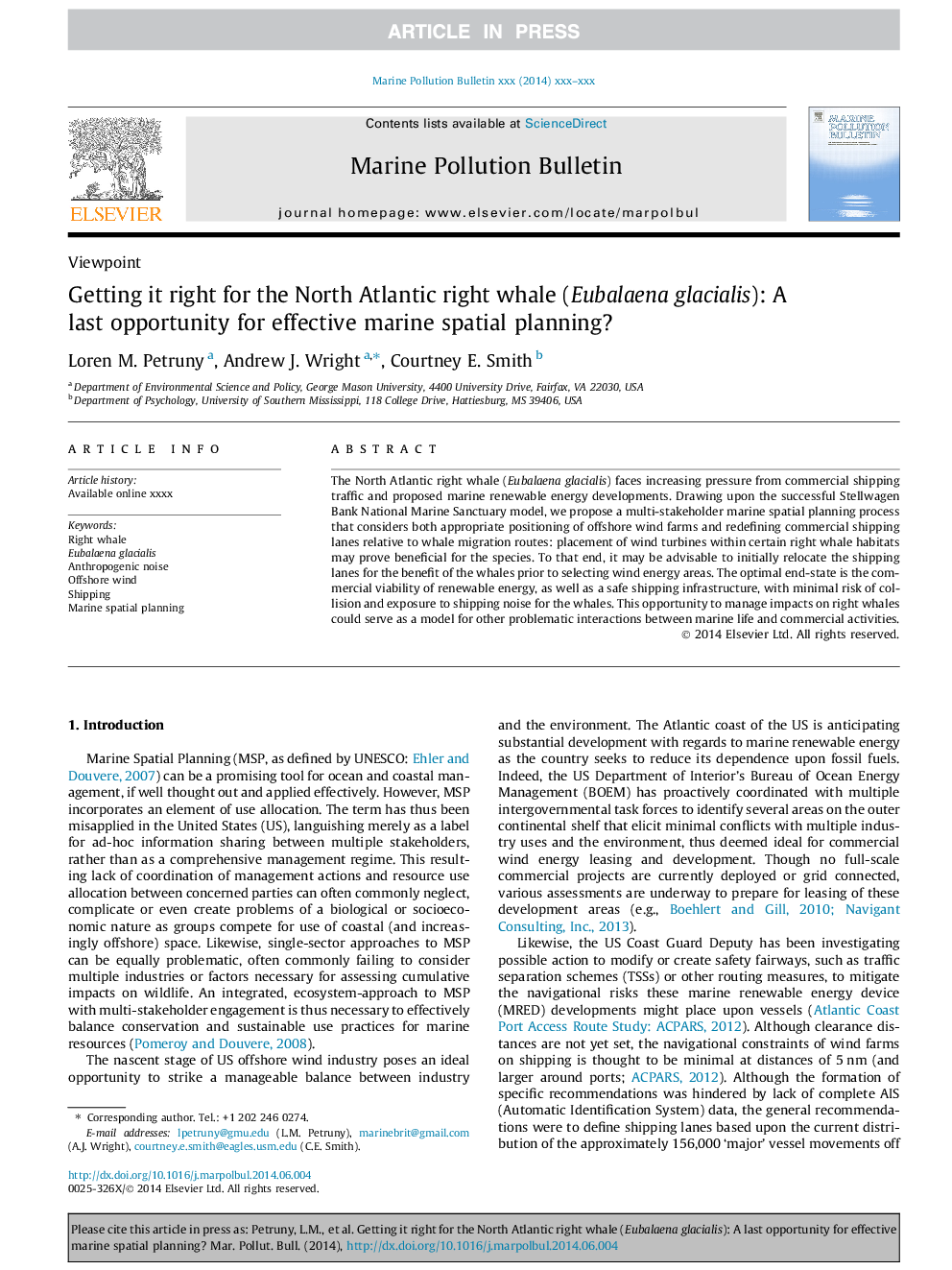| Article ID | Journal | Published Year | Pages | File Type |
|---|---|---|---|---|
| 6358149 | Marine Pollution Bulletin | 2014 | 9 Pages |
Abstract
The North Atlantic right whale (Eubalaena glacialis) faces increasing pressure from commercial shipping traffic and proposed marine renewable energy developments. Drawing upon the successful Stellwagen Bank National Marine Sanctuary model, we propose a multi-stakeholder marine spatial planning process that considers both appropriate positioning of offshore wind farms and redefining commercial shipping lanes relative to whale migration routes: placement of wind turbines within certain right whale habitats may prove beneficial for the species. To that end, it may be advisable to initially relocate the shipping lanes for the benefit of the whales prior to selecting wind energy areas. The optimal end-state is the commercial viability of renewable energy, as well as a safe shipping infrastructure, with minimal risk of collision and exposure to shipping noise for the whales. This opportunity to manage impacts on right whales could serve as a model for other problematic interactions between marine life and commercial activities.
Keywords
Related Topics
Physical Sciences and Engineering
Earth and Planetary Sciences
Oceanography
Authors
Loren M. Petruny, Andrew J. Wright, Courtney E. Smith,
